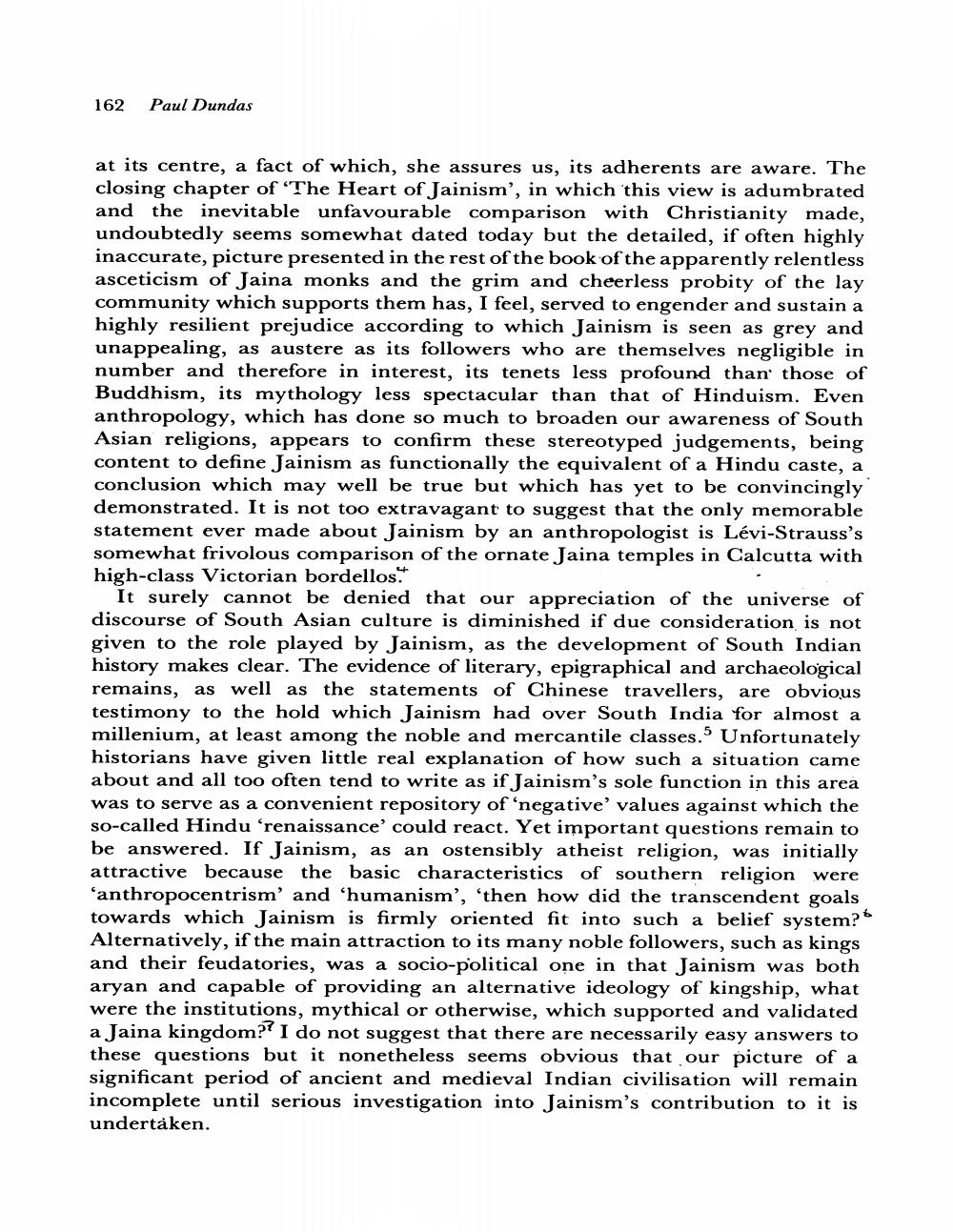Book Title: Food And Freedom Author(s): Paul Dundas Publisher: Paul Dundas View full book textPage 2
________________ 162 Paul Dundas at its centre, a fact of which, she assures us, its adherents are aware. The closing chapter of "The Heart of Jainism', in which this view is adumbrated and the inevitable unfavourable comparison with Christianity made, undoubtedly seems somewhat dated today but the detailed, if often highly inaccurate, picture presented in the rest of the book of the apparently relentless asceticism of Jaina monks and the grim and cheerless probity of the lay community which supports them has, I feel, served to engender and sustain a highly resilient prejudice according to which Jainism is seen as grey and unappealing, as austere as its followers who are themselves negligible in number and therefore in interest, its tenets less profound than those of Buddhism, its mythology less spectacular than that of Hinduism. Even anthropology, which has done so much to broaden our awareness of South Asian religions, appears to confirm these stereotyped judgements, being content to define Jainism as functionally the equivalent of a Hindu caste, a conclusion which may well be true but which has yet to be convincingly demonstrated. It is not too extravagant to suggest that the only memorable statement ever made about Jainism by an anthropologist is Lévi-Strauss's somewhat frivolous comparison of the ornate Jaina temples in Calcutta with high-class Victorian bordellos. It surely cannot be denied that our appreciation of the universe of discourse of South Asian culture is diminished if due consideration is not given to the role played by Jainism, as the development of South Indian history makes clear. The evidence of literary, epigraphical and archaeological remains, as well as the statements of Chinese travellers, are obvious testimony to the hold which Jainism had over South India for almost a millenium, at least among the noble and mercantile classes. Unfortunately historians have given little real explanation of how such a situation came about and all too often tend to write as if Jainism's sole function in this area was to serve as a convenient repository of 'negative' values against which the so-called Hindu 'renaissance' could react. Yet important questions remain to be answered. If Jainism, as an ostensibly atheist religion, was initially attractive because the basic characteristics of southern religion were 'anthropocentrism' and 'humanism', 'then how did the transcendent goals towards which Jainism is firmly oriented fit into such a belief system?" Alternatively, if the main attraction to its many noble followers, such as kings and their feudatories, was a socio-political one in that Jainism was both aryan and capable of providing an alternative ideology of kingship, what were the institutions, mythical or otherwise, which supported and validated a Jaina kingdom? I do not suggest that there are necessarily easy answers to these questions but it nonetheless seems obvious that our picture of a significant period of ancient and medieval Indian civilisation will remain incomplete until serious investigation into Jainism's contribution to it is undertaken.Page Navigation
1 2 3 4 5 6 7 8 9 10 11 12 13 14 15 16 17 18 19 20 21 22 ... 37
